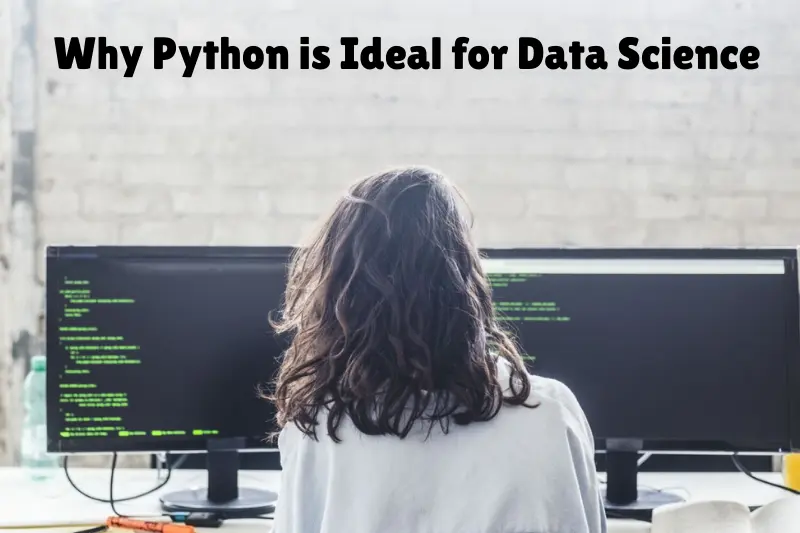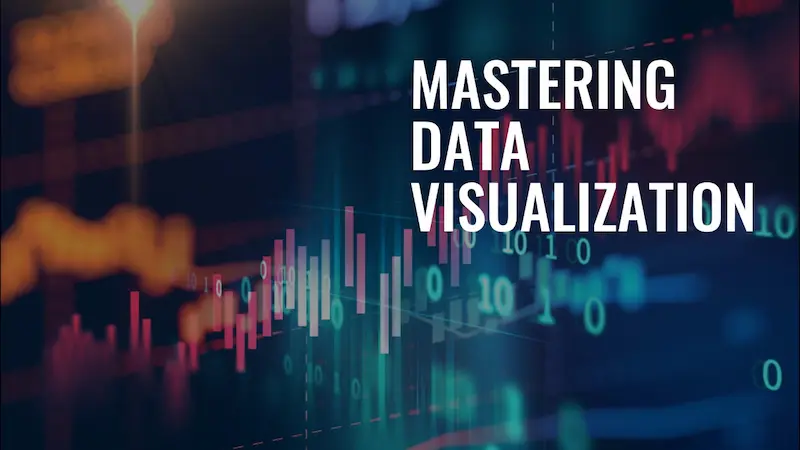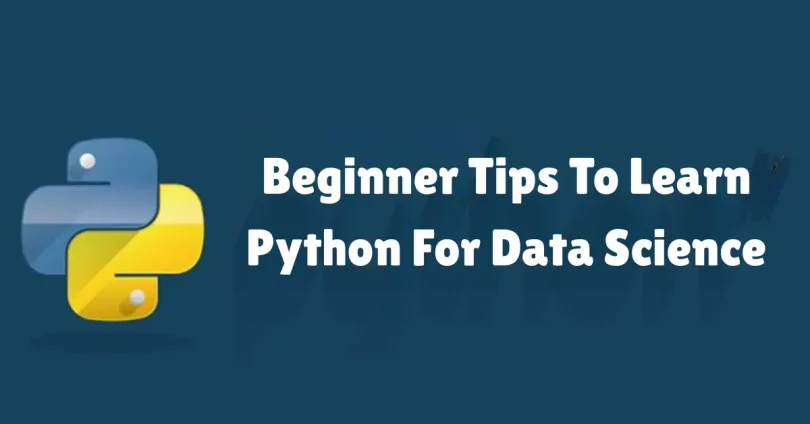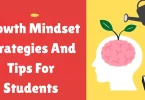Python has quickly become the go-to programming language for data science. Its simple syntax, clear readability, and versatility make it perfect for both beginners and experienced professionals. Imagine you want to understand customer behavior for an online store or predict sales for the next month—Python gives you the tools and libraries to handle these tasks efficiently.
Starting out in Python for data science can feel overwhelming, but with the right approach and steady practice, it can actually be an enjoyable learning experience. In this guide, we’ll walk you through practical beginner tips to learn Python for data science, helping you go from writing your first line of code to analyzing real datasets with confidence.
Why Python is Ideal for Data Science

Python is a popular, interactive, interpreted, and object-oriented scripting language. Its most notable advantage is readability—Python code often looks like plain English. Unlike other programming languages that rely heavily on punctuation and complex syntax, Python keeps things simple, allowing beginners to focus on learning programming concepts rather than memorizing intricate rules.
Beyond readability, Python is highly versatile. It is widely used in:
- Web Development: Frameworks like Django and Flask make building web apps easier.
- Game Development: Libraries such as Pygame help create simple games.
- Data Analytics and Machine Learning: Python’s rich ecosystem of libraries and tools simplifies data handling, visualization, and modeling.
For data science specifically, Python’s libraries, frameworks, and community support allow beginners to work with real-world datasets, clean and preprocess data, visualize trends, and implement machine learning models—all without needing a steep learning curve.
Beginner Tips to Learn Python for Data Science
1. Start with the Basics
Before diving into data science tasks, you need a solid foundation in Python fundamentals. Beginners should focus on understanding:
- Variables and Data Types: Learn how to store and manipulate data using integers, floats, strings, and booleans.
- Lists, Dictionaries, and Sets: These are core data structures used to store and organize data.
- Loops and Conditional Statements: Control the flow of your programs using for, while, and if-else statements.
- Functions and Modules: Reuse code and organize your programs efficiently.
Pro Tip: Practice coding small programs daily. Even simple exercises like calculating averages, manipulating strings, or creating small loops can significantly strengthen your foundation. Online platforms such as W3Schools, Codecademy, SoloLearn, and LeetCode (beginner section) are excellent resources for interactive learning.
2. Learn Python Libraries for Data Science
Python’s strength in data science comes from its rich library ecosystem. Once you’re comfortable with the basics, start exploring essential libraries:
- NumPy: Used for numerical computations and working with large arrays efficiently. It forms the backbone of many data science operations.
- Pandas: The go-to library for data manipulation and analysis. It allows you to work with datasets in tables (DataFrames), clean data, and perform exploratory analysis.
- Matplotlib & Seaborn: These libraries help create compelling visualizations such as bar charts, scatter plots, and heatmaps. Visualization is crucial to understand patterns in data.
- Scikit-learn: A beginner-friendly library for implementing machine learning algorithms like linear regression, decision trees, clustering, and classification.
Pro Tip: Practice small tasks using these libraries. For example, take a CSV file of daily temperatures, load it using Pandas, calculate the average temperature, and visualize trends using Matplotlib or Seaborn. Hands-on practice helps solidify learning faster than theory alone.
3. Work on Small Projects
The best way to learn Python for data science is by doing. Applying concepts to real datasets reinforces understanding and builds confidence. Here are some beginner-friendly project ideas:
- Dataset Analysis: Download datasets from Kaggle or UCI Machine Learning Repository and perform basic analysis. Identify trends, correlations, and outliers.
- COVID-19 Data Visualization: Track daily cases or vaccination trends and visualize patterns over time.
- Simple Recommendation System: Build a basic movie or book recommendation system using Python’s data structures and libraries.
Pro Tip: Always start small. Projects don’t need to be complex—what matters is practicing end-to-end workflows: loading data, cleaning it, analyzing it, and visualizing results.
You may also like to read this:
Best AI Writing Assistant Tools For Bloggers – 2025 Review
10 Best Productivity Apps For Remote Work Teams
Best 15 Free Noise Cancellation Apps For Mobile Phones
12 Best Free Mobile Scanning Apps For iOS & Android
12 Free Online Marketing Certification Courses List 2025
4. Practice Data Cleaning
Raw data is rarely perfect. One of the most crucial skills in data science is data cleaning and preprocessing. Beginners should focus on:
- Handling missing values using Pandas functions like fillna() or dropna().
- Removing duplicates with drop_duplicates().
- Converting data types for consistency using astype().
- Normalizing and scaling data for machine learning applications.
Data cleaning may seem tedious, but it’s a critical step before analysis or modeling. The better you clean your data, the more accurate and meaningful your insights will be.
5. Engage with the Community
Python has a large, supportive, and beginner-friendly community. Engaging with the community helps you learn faster, solve problems, and stay updated. Some ways to participate:
- Ask questions or browse answers on Stack Overflow.
- Join discussion forums like Reddit’s r/learnpython or Data Science Stack Exchange.
- Follow blogs, YouTube tutorials, or Twitter threads focused on Python and data science.
Pro Tip: Don’t be afraid to ask questions. Even experienced programmers rely on community support to learn new concepts or troubleshoot issues.
6. Practice Regularly
Consistency is the key to mastering Python for data science. Set aside dedicated time daily for coding, even if it’s just 30–45 minutes. Gradually, you’ll find your problem-solving speed improving and your confidence growing.
Pro Tip: Keep a coding journal. Note what you learned each day, small errors you encountered, and how you solved them. Reviewing your progress over time helps reinforce learning.
7. Learn by Teaching
Teaching others is a surprisingly effective way to deepen your understanding. It forces you to think clearly and explain concepts logically.
- Write blog posts about what you’ve learned.
- Record short video tutorials.
- Teach friends or peers the concepts you’ve mastered.
By teaching, you identify gaps in your knowledge and reinforce your learning.
8. Master Data Visualization

Data visualization is a key skill in data science. Being able to present data clearly helps others understand your findings and supports decision-making. Once you are familiar with Matplotlib and Seaborn, try learning:
- Plotly: For interactive and web-based visualizations.
- Bokeh: For creating dynamic, real-time visualizations.
- Dash: For building interactive dashboards using Python.
Pro Tip: Start by visualizing the datasets you work with in your projects. Try plotting relationships, distributions, and trends. Experimenting with different charts will improve both your coding and analytical skills.
9. Explore Data Analysis Techniques
As a beginner, learning Python syntax is not enough—you also need to understand data analysis techniques. Focus on:
- Descriptive statistics (mean, median, mode, standard deviation)
- Correlation analysis to find relationships between variables
- Aggregation and grouping using Pandas
- Time series analysis if working with temporal data
Pro Tip: Pick datasets relevant to your interests, such as sports, movies, or finance. This makes data analysis more engaging and relatable.
10. Learn Basic Machine Learning Concepts
Once you are comfortable with Python and libraries like Pandas, NumPy, and Matplotlib, start exploring machine learning. For beginners, focus on:
- Supervised Learning: Linear regression, decision trees, and classification models
- Unsupervised Learning: Clustering techniques like K-Means
- Model Evaluation: Metrics like accuracy, precision, recall, and confusion matrix
Pro Tip: Start with small datasets, like the Titanic dataset on Kaggle, to practice building models and predicting outcomes.
11. Use Jupyter Notebook for Practice
Jupyter Notebook is an interactive development environment widely used in data science. It allows you to:
- Write code and see outputs instantly
- Document your workflow with text and visualizations
- Share projects easily with others
Pro Tip: Use Jupyter Notebook to combine code, explanations, and visualizations in one place. It’s perfect for learning, documenting, and presenting projects.
12. Version Control with Git
Learning Git and GitHub is a useful tip even for beginners. It helps you:
- Track changes in your code
- Collaborate on projects with others
- Maintain a portfolio of your work
Pro Tip: Start by uploading your small Python projects to GitHub. This builds your profile and demonstrates your skills to potential employers or collaborators.
13. Solve Real-World Problems
Beginner learning is more effective when applied to real-world problems. For example:
- Analyze sales data to identify trends and insights
- Predict stock prices using historical datasets
- Track and visualize social media engagement
Pro Tip: Challenge yourself with datasets from Kaggle Competitions. Even if you don’t win, trying real-world problems teaches problem-solving skills, which are essential in data science.
14. Automate Repetitive Tasks
Python is great for automation. As a beginner, practice automating simple tasks:
- Reading and cleaning multiple CSV files
- Sending automated email reports
- Web scraping for data collection
Pro Tip: Automation projects help you see practical uses of Python and improve your efficiency, while also building your portfolio.
15. Keep Learning and Updating Skills
Data science is a fast-evolving field. Python libraries and techniques are constantly updated. To stay current:
- Follow blogs like Towards Data Science, Analytics Vidhya, and Real Python
- Subscribe to YouTube channels focused on Python and data science
- Join online courses or bootcamps for advanced skills
Pro Tip: Dedicate a few hours each week to learning new libraries, tools, or techniques. Continuous learning keeps you ahead in the field.
Conclusion
Mastering Beginner tips to learn Python for data science is achievable with consistent practice and the right approach. Start with the basics, explore essential libraries, work on small projects, and practice data cleaning and visualization. Engaging with the community and teaching others reinforces your learning.
By following these Beginner tips to learn Python for data science and applying them to real projects, you can confidently analyze data, derive insights, and solve real-world problems. Consistency and curiosity are key to making Python your most powerful tool for data science success.
FAQs
1. What is Python and why is it used in data science?
Python is a popular, easy-to-learn programming language. Its readability, versatility, and powerful libraries make it ideal for data analysis, visualization, and machine learning.
2. How can beginners start learning Python for data science?
Start with the basics—variables, data types, loops, and functions. Then, gradually explore libraries like Pandas, NumPy, Matplotlib, and Scikit-learn while practicing small projects.
3. Which Python libraries are essential for data science beginners?
Key libraries include:
NumPy for numerical computations
Pandas for data manipulation
Matplotlib & Seaborn for visualization
Scikit-learn for basic machine learning
4. How important is data cleaning in Python for data science?
Data cleaning is crucial. Real-world datasets are often messy. Learning to handle missing values, remove duplicates, and preprocess data ensures accurate analysis and reliable results.
5. Can I learn Python for data science without prior programming experience?
Yes! Python’s simple syntax and beginner-friendly resources make it accessible for beginners. Start small, practice regularly, and follow step-by-step guides.




